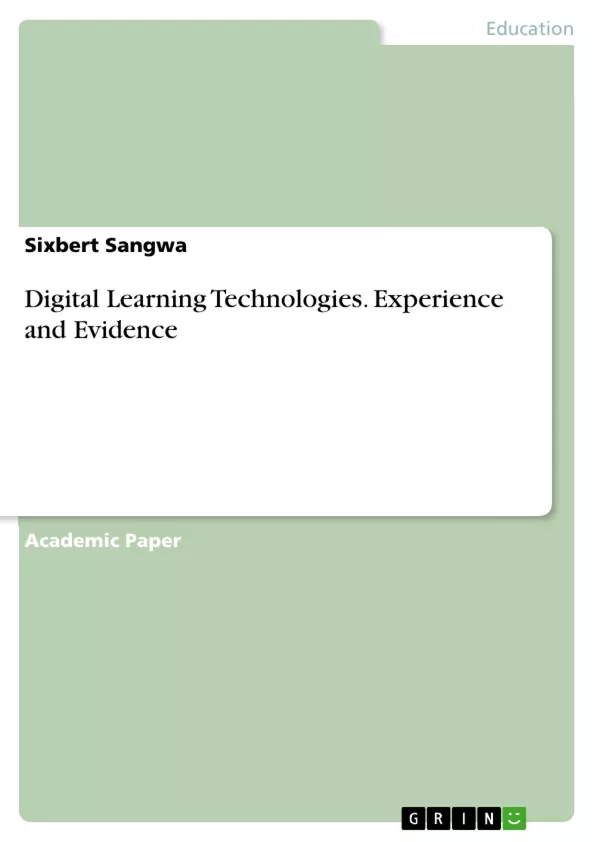This paper takes a look at blogging and mobile learning, the two technologies that underpin the learner's experience of technology-enhanced learning. Each technology is critically discussed in terms of how it supports teaching and learning and judged against its strength and weaknesses in specific contexts. Based on concrete evidence, including the author's design of the learning activity, key recommendations were given to other practitioners as to how they can use each technology for teaching. One finding is that, as traditional classrooms change, blogging can help students develop the necessary educational skills, but more research is needed to understand the changing nature of teaching and learning as a result of using blogs. To overcome many obstacles related to mobile technology, a solid strategy was recommended. In conclusion, the author found the concept of individual and collaborative learning useful, especially in understanding the experience of learners in a given context.
Table of Contents
- Digital Technologies
- Blog technology
- Mobile telephone technology
- Digital Technologies: Recommendations
- Blog technology
- Knowing your subject and choosing the right blogging platform
- Setting up clear guidelines and expectations
- Be realistic, monitor and Integrate class curriculum
- Mobile technology
- Blog technology
- Digital Technologies: Design or Specification
- Blog learning activity
- Characteristics of learners
- Barriers that learners may face
- The schools guideline for a course design
- Expected Module Outcomes
- Training content, plan and design
- Blog learning activity
- Digital Technologies: Individual and Collaborative Learning
Objectives and Key Themes
This paper examines the use of blogging and mobile learning within the context of technology-enhanced learning. The author critically analyzes each technology, evaluating its strengths and weaknesses in supporting teaching and learning. Based on empirical evidence, including the author's own learning activity design, key recommendations for using these technologies in educational settings are presented.
- The potential and challenges of using blogs in education
- The impact of mobile technology on teaching and learning
- The importance of individual and collaborative learning in a digital environment
- The changing nature of teaching and learning in the age of digital technologies
- The role of technology in promoting student engagement and interaction
Chapter Summaries
The paper explores the use of blogging and mobile learning within the context of technology-enhanced learning. The first chapter delves into the benefits and challenges of incorporating blogs into educational settings, examining the author's own experience and drawing on existing research. The author discusses the potential of blogs to foster student engagement and learning, while acknowledging the potential challenges related to student privacy and participation. The second chapter focuses on mobile learning, outlining its advantages and drawbacks in educational settings. The author presents recommendations for integrating mobile technology into teaching practices, addressing potential obstacles and promoting effective implementation.
Keywords
The key focus topics of the paper include the use of blogs in learning, online and distance education, mobile learning, students and teachers' experience with technology, Web 2.0 tools, individual and collaborative learning, learning design and specification.
- Citation du texte
- Dr. Sixbert Sangwa (Auteur), 2018, Digital Learning Technologies. Experience and Evidence, Munich, GRIN Verlag, https://www.grin.com/document/1012752



